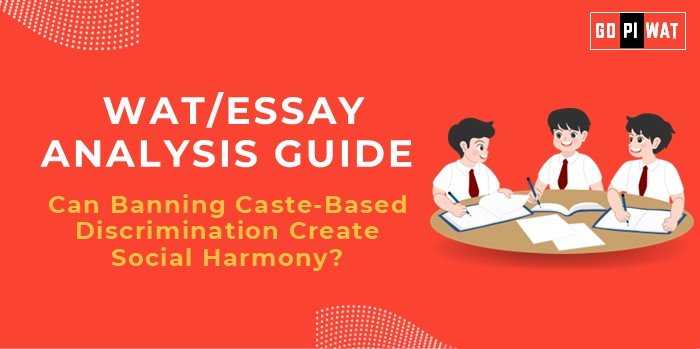⚖️ Can Banning Caste-Based Discrimination Create Social Harmony?
🌟 Understanding the Importance
India has implemented numerous legal measures to combat caste-based discrimination, a deeply entrenched issue affecting its social fabric. While legal bans provide a foundation for equality, achieving true social harmony requires addressing structural inequities, economic disparities, and cultural biases.
📊 Achievements
- 🎓 Progress in Education and Employment: Reservation policies have increased representation of marginalized communities in universities and government jobs.
- 📢 Growing Awareness: Initiatives by governments and corporations promote diversity, equity, and inclusion (DEI), fostering awareness about caste equality.
- 📜 Legal Frameworks: Laws such as the Scheduled Castes and Scheduled Tribes (Prevention of Atrocities) Act ensure protection and provide avenues for justice.
⚠️ Challenges and Comparative Analysis
- 🛑 Persistent Social Biases: Deeply ingrained caste prejudices continue to influence societal interactions despite legal prohibitions.
- 💰 Economic Inequality: Limited socio-economic mobility for marginalized communities hampers efforts toward equitable development.
- 🌎 Global Comparisons: The U.S. Civil Rights Movement achieved legal gains against racial discrimination, but economic and social gaps persist, highlighting the need for multifaceted strategies.
🔮 Future Outlook
Combining legal enforcement with education, economic reform, and community-level initiatives can foster long-term harmony:
- 📚 Education: Curriculum reforms to include lessons on caste equality and the importance of inclusivity.
- 🏗️ Economic Empowerment: Policies focusing on equitable access to jobs, resources, and entrepreneurship opportunities.
- 🤝 Community Engagement: Local initiatives promoting cross-caste collaboration in workplaces and public spaces.
📄 Conclusion
Banning caste-based discrimination is a necessary step toward equality, but it is not sufficient on its own. Social harmony requires a multi-pronged approach that combines legal safeguards with efforts to shift cultural attitudes, promote economic equity, and foster community-level engagement. Learning from global examples like the U.S. Civil Rights Movement can guide India in achieving a more inclusive and harmonious society.
📄 Source: Written Ability Test (WAT) Analysis Guide, 2024


